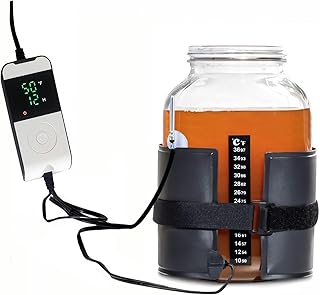Understanding Carbonation in Wine
Carbonation in wine refers to the process of dissolving carbon dioxide gas into the liquid, creating bubbles and a refreshing effervescence. This method is commonly associated with sparkling wines, which are known for their lively character and unique mouthfeel. Understanding how to carbonate wine involves grasping the science behind carbonation, the types of wines that can be carbonated, and the various methods available for achieving the desired level of fizziness.
Types of Carbonated Wines
There are several types of carbonated wines, including sparkling wines, frizzante, and petillant. Sparkling wines, such as Champagne and Prosecco, are fully carbonated, while frizzante wines have a lower level of carbonation, offering a gentle fizz. Petillant wines are slightly sparkling, providing a subtle effervescence. Each type of carbonated wine has its own unique characteristics and production methods, making it essential to choose the right style based on personal preference and occasion.
Methods of Carbonating Wine
There are two primary methods for carbonating wine: natural fermentation and forced carbonation. Natural fermentation occurs when yeast consumes sugars in the wine, producing carbon dioxide as a byproduct. This method is commonly used in traditional sparkling wine production. Forced carbonation, on the other hand, involves injecting carbon dioxide directly into the wine under pressure. This method allows for greater control over the level of carbonation and is often used in commercial production.
Natural Fermentation Process
The natural fermentation process for carbonating wine typically involves a secondary fermentation in the bottle. After the initial fermentation, a mixture of sugar and yeast is added to the wine, which is then sealed in a bottle. As the yeast consumes the sugar, carbon dioxide is produced, creating bubbles. This method requires careful monitoring of temperature and pressure to ensure the wine develops the desired level of carbonation without over-pressurizing the bottle.
Forced Carbonation Technique
Forced carbonation is a more straightforward method for achieving carbonation in wine. This technique involves using a carbonation system that injects carbon dioxide into the wine under controlled pressure. The wine is chilled before carbonation, as colder temperatures allow for better gas absorption. This method is particularly popular among winemakers looking to produce sparkling wines quickly and efficiently, without the lengthy process of natural fermentation.
Get more content like this!
Sign up to receive updates and new terms first hand.
Choosing the Right Equipment
To carbonate wine effectively, selecting the right equipment is crucial. For natural fermentation, winemakers need bottles that can withstand pressure, such as thick glass bottles with secure corks. For forced carbonation, a carbonation system or a soda siphon can be used. Additionally, a pressure gauge is essential to monitor the carbonation levels and prevent over-carbonation, which can lead to bottle explosions.
Carbonation Levels and Taste
The level of carbonation in wine significantly impacts its taste and mouthfeel. Higher carbonation levels can enhance the perception of acidity and freshness, making the wine feel more vibrant on the palate. Conversely, lower carbonation levels may result in a smoother, creamier texture. Winemakers must carefully consider the desired carbonation level to achieve the perfect balance between effervescence and flavor.
Storing Carbonated Wine
Proper storage of carbonated wine is essential to maintain its quality and effervescence. Carbonated wines should be stored upright in a cool, dark place to prevent the cork from drying out and losing its seal. Once opened, carbonated wine should be consumed within a few days to enjoy its full effervescence, as exposure to air can lead to a loss of carbonation and freshness.
Pairing Carbonated Wine with Food
Carbonated wines are incredibly versatile when it comes to food pairings. The effervescence can cleanse the palate and enhance the flavors of various dishes. Sparkling wines pair beautifully with salty foods, fried dishes, and rich cheeses, while frizzante wines complement lighter fare, such as salads and seafood. Understanding how to pair carbonated wine with food can elevate the dining experience and highlight the wine’s unique characteristics.
Experimenting with Carbonation
For those interested in exploring the world of carbonated wine, experimentation is key. Home winemakers can try different methods of carbonation, adjust sugar levels, and experiment with various grape varieties to discover unique flavor profiles. Whether using natural fermentation or forced carbonation, the process of creating carbonated wine can be a rewarding and enjoyable journey for wine enthusiasts.




